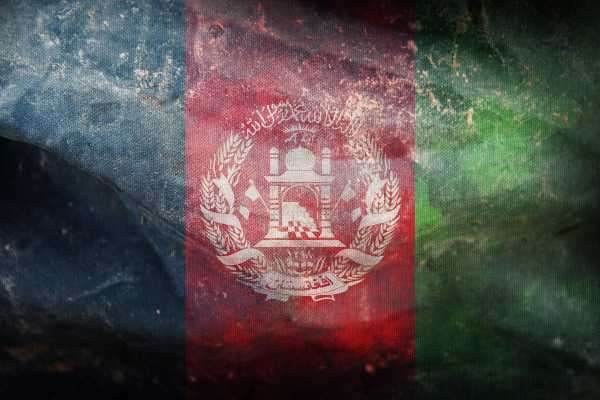
More than a century ago, the Russians and the British played the Great Game for the control of Afghanistan. Immortalized in Rudyard Kipling’s “Kim,” this game defined three generations of soldiers, spies and diplomats. As the remarkable Rory Stewart records, the Great Game never ended. The Soviets and the Americans carried on where the Russians and the British left. Now, a new great game is about to begin.
Is Afghanistan Going to Break Apart?
READ MORE
As is well chronicled, Afghanistan emerged as a buffer state between the Russian and British empires. Dominated by the Pashtuns, this state remained an inchoate entity of competing ethnic groups, feuding clans and autonomous villages. As Tabish Forugh and one of the authors noted in an earlier article on Fair Observer, this Pashtun-dominated order crumbled when the Soviets invaded Afghanistan in 1979. The Taliban brought back this order in the 1990s and are establishing Pashtun primacy yet again.
New Life to Old Identities
Modernity has not been kind to Afghanistan. Until the 1970s, this country was a land where hippies showed up to smoke pot and have a good time. Older Pakistani friends reminisce about driving from Peshawar to Kabul to buy videotapes of Bollywood movies and bask in the relatively liberal milieu of Afghanistan. When the Soviets intervened in 1979, this idyllic version of the country disintegrated. For all the efforts of Soviet troops, engineers and administrators, communism failed.
By February 1989, Soviet troops withdrew from Afghanistan. Later that year, the Berlin Wall fell and the Soviet Union itself imploded in 1991. The loosely allied mujahideen turned their guns on each other and a bloody civil war followed. The Tajiks, the Uzbeks and the Pashtuns were at each other’s throats. Eventually, the Pakistani-trained, Islamabad-backed, Pashtun-led Taliban triumphed in 1996. Their rule was cut short by the 9/11 attacks in 2001, which brought American intervention and began a 20-year experiment with democracy.
Embed from Getty Images
Sadly, the democratic experiment has failed too. In June 2021, Forugh and one of the authors wrote that President Ashraf Ghani occupied “his fancy palace in Kabul thanks to the barrels of American guns,” and, once the Americans left, he would be toast. Americans established a presidential system based on their own model that was destined to fail in a famously diverse and fractious society. Note that the US leaders after World War II chose parliamentary democracy for Germany and Japan, two industrial societies with a far higher degree of homogeneity. If Washington blundered at the beginning, its decisions were catastrophic at the end. Today, democracy is dead and buried, the fanatical Taliban rule the roost and ethnic identity is replacing fragile multiethnic Afghan nationalism.
The Rise of Ethnic Nationalism
As stated earlier, Afghanistan is where two expanding empires met. The British had digested modern-day Bangladesh, India and Pakistan, then British India. The Russians had taken over an odd assortment of clans and khanates in Central Asia, many of whom were descendants of Genghis Khan and Timur. Just like the boundaries drawn by the British or the French, the Russian ones were arbitrary too. As ethnic nationalism rises in Afghanistan, it will spill over into Central Asia.
As late as February 2020, the US State Department declared that “a secure and stable Afghanistan [was] a top priority for the Central Asian governments.” It encouraged these governments to boost economic and trade ties with their Kabul counterparts. American hopes for “stable governance of multi-ethnic, Muslim-majority countries” now lie in tatters. Kazakhstan demonstrates that Russian realpolitik of supporting strongmen has triumphed.
Yet even the Kremlin cannot hold back the tide of ethnic nationalism that is unfolding in Afghanistan and spreading to Central Asia. The Tajiks led by Amrullah Saleh and Ahmad Massoud have the tacit, if not explicit, support of the Tajikistan government. The Uzbek warlord Rashid Dostum fled to Uzbekistan when the Taliban took over. As the Pashtuns leave not even scraps at the table for others, it is only natural that minority ethnicities are looking across the border for a better future. Just as in former Yugoslavia, ethnic nationalism is now on the rise in Central Asia.
Pakistan’s Frankenstein Monster’s Problem: Radical Islam
To a large degree, Pakistan has fostered, if not created, the ethnic nationalism now rising in Afghanistan and spilling over into Central Asia. It is an open secret that Pakistan’s military elite created the Taliban. As Ishtiaq Ahmed explains, “the Garrison State” has always been paranoid about its lack of strategic depth. The loss of East Pakistan that won independence as Bangladesh in 1971 has scarred the Pakistani psyche and made the country’s political elites double down on political Islam. In the 1980s, General Muhammad Zia-ul-Haq moved Pakistan along a fundamentalist arc. Jihad became the order of the day not only against the Soviets in Afghanistan but also against India, which he sought to “bleed through a thousand cuts.”

Make Sense of the World
Unique Insights from 2,500+ Contributors in 90+ Countries
I agree to receive emails and other content from Fair Observer. I understand that I may repeal my consent at any time. You can review our Privacy Policy and Terms of Use for further information .
Zia was not an exception to Pakistani hostility to India. Zulfikar Ali Bhutto, the man Zia ousted through a military coup and hung on the gallows, vowed to wage a “thousand year war against India.” In 1974, Pakistani mobs massacred thousands of Ahmadis and, instead of delivering them protection or justice, Bhutto brought in a constitutional amendment declaring the Ahmadis non-Muslims. The same year, he declared Pakistan would go nuclear, claiming “We shall eat grass but have our bomb.” Islamic fundamentalism and Pavlovian anti-India ethos drive Pakistani state policy regardless of whether the country is under civil or military rule.
Backed by the US and Saudi Arabia, the Pakistan-backed mujahideen brought the Soviet Union to its knees. Against India, Pakistan has followed an asymmetric strategy of championing irregulars, insurgent and terrorists from its very inception. In the first of a three-part series analyzing the fallout of the Taliban’s takeover of Afghanistan, Rakesh Kaul points out how Pakistan supported a Pashtun jihad in Kashmir as early as 1947. The marauding tribesmen killed Kaul’s great-grandfather, “tied his dead body to a horse and dragged it through the streets to terrorize the local population into submission.”
Starting from the 1980s, Pakistan’s Inter-Services Intelligence (ISI) unleashed terror as an instrument of state policy against India. First, the ISI backed the violent Sikh insurgency for an independent state of Khalistan, a strategy that it continues with till today. Second, the ISI supported the insurgency in Kashmir that blew up in 1989 and persists till today. Third, the ISI created and supported militant jihadist groups such as Lashkar-e-Taiba and Jaish-e-Mohammed to overwhelm India through multiple terrorist attacks. With a crisis-ridden economy and much smaller military, Pakistan has bet on asymmetric terror tactics and nuclear deterrence to tie India down.
However, Pakistan is discovering that when you sow the wind, you reap the whirlwind. Like Victor Frankenstein, the Garrison State has created a monster: radical Islam. Since the 1980s, Pakistan has become intolerant, sectarian and violent. Minorities have faced persecution and suffered ethnic cleansing. The case of the animistic Kalash people in Chitral is a case in point. Many documentaries have recorded how they have faced persistent persecution and forced conversion. As a result, a mere 3,500 Kalash are left and they may not survive for too long.
Embed from Getty Images
Radical Islam was meant to be a tool the Pakistani state used against its neighbors. Now, it has spread like cancer throughout all aspects of the country’s life. Instead of Pakistan’s corrupt and inefficient government, madrasas now provide education for refugees and lower-class Pakistanis. Many of them are hardline and churn out jihadis by the thousands. For instance, most of the Afghani Taliban leadership graduated from the madrasa Dur-ul-Uloom Haqqania.
Religious figures can now bring the country over a standstill in an instant. Violent protests repeatedly erupted after French President Emmanuel Macron said that Islam was in crisis. Terror attacks within Pakistan have shot up. Roohafza, a sugary syrupy drink, has replaced whiskey in officer messes. Many officers now sport flowing beards and offer prayer five times a day. In the words of Javed Jabbar, Pakistan has experienced “a steady retreat into showy religiosity and visible piety in the public domain and in most media.” A new law makes it compulsory for every child to learn Arabic.
Pakistan finds itself in a bind. It has to direct the thousands of jihadis graduating from madrasas against external enemies to avoid internecine strife. In fact, it is only a question of time before radical Islamists will infiltrate all organs of the Pakistani state. The Taliban’s victory has convinced them that Allah is on their side. The risks of a general like Zia or a cleric like Ayatollah Ruhollah Khomeini taking over and unleashing nuclear terror or nuclear war are getting higher by the day.
Radical Islam and Pashtun Pride Make an Explosive Cocktail
If radical Islam is dangerous, radical Islam combined with ethnic nationalism is terrifying. After 20 years, the Pashtun-led Taliban is back in power. They are surging with confidence after humbling the world’s superpower. This time, they are battle-hardened, better trained and savvier than their predecessors from the 1990s. The Taliban also have a strong sense of history and look back to the expansionist 18th-century Ahmed Shah Durrani as a model to follow.
Durrani was a historic figure who sent troops to Central Asia, defeated the Marathas in the historic 1761 Third Battle of Panipat with assistance of local Muslim rulers and created the modern nation of Afghanistan. Durrani’s young nation soon fell victim to the Great Game and lost much territory to the British. Led by Sir Henry Mortimer Durand, the British delineated the modern-day border between Afghanistan and Pakistan. Till date, many Pashtuns have not accepted this border.
Embed from Getty Images
The Taliban are expansionists. In the north, the Tajiks and the Uzbeks will fight a guerilla war, ensuring their eventual retreat. To the west lie Turkmenistan and Iran, two ethnically distinct entities where the Taliban cannot expand. To the south and east lies Pakistan where the Taliban trained and where their Pashtun kin reside. Furthermore, the Pashtuns have a deep memory of raiding and ruling the plains of Indus and the Ganges. When Babur swept down from modern-day Uzbekistan to modern-day Pakistan and India through the Khyber Pass, he defeated a Pashtun sultan who was ruling Delhi.
When Pakistan won independence, Pashtun opinion was divided. Some like Sardar Abdur Rab Nishtar wanted a homeland for Muslim Indians in the shape of Pakistan. Others like Abdul Ghaffar Khan, a friend of Mahatma Gandhi, fought for a unified India and then for an autonomous Pashtunistan. Still others wanted reunification with Afghanistan. Worryingly for Pakistan, Pashtun refugees have streamed into the country from Afghanistan since 1979. Encyclopedia Britannica tells us that there were “about 11 million Pashtun in Afghanistan and 25 million in Pakistan in the early 21st century.” Multiple estimates indicate Pashtuns to be over 15% of Pakistan’s population. In Afghanistan, they comprise about 42% of the population. Once all-out ethnic conflict erupts in Afghanistan, Pashtun identity is only likely to strengthen.
So far, the Punjabi elite running Pakistan has co-opted the Pashtun elite by giving it plum positions in the state apparatus, especially the military. The ruling elite has also used Pashtuns to fight wars and proxy wars in Kashmir since 1947 when both India and Pakistan emerged as two independent entities after the partition of British India. During the 20 years of US presence in Afghanistan, cross-border incursions into and violent incidents in Kashmir declined because Pashtuns were too busy fighting a jihad at home. Now, these jihadis will turn their attention to Kashmir.
Not all jihadis are fixated with Kashmir. Some of them are sworn enemies of the Pakistani state such as the Tehrik-i-Taliban Pakistan. With the victory of the Taliban in Afghanistan, Pakistan may have achieved its long-cherished strategic depth against India, but it now has the tail of the Pashtun tiger in its hands. Pakistan’s ISI has no option but to deploy Pashtun jihadis against India in Kashmir. Failure on the Kashmir front could trigger Pashtun dissatisfaction against Punjabi leadership.
A tiny wrinkle many forget is that Pashtuns see themselves as a warrior people and the natural leaders of Muslims in the Indian subcontinent. They have successfully beaten back the British, the Soviets and the Americans. Pashtuns see the Punjabis as soft, loud and showy. Like the Balochs, the Sindhis, the Muhajirs and others, Pashtuns resent the Punjabi domination of Pakistan. Furthermore, many Pashtuns regard the banks of the Indus, not the Durand Line, as their natural border.
Blood Borders
Pakistan’s Pashtun problem is a particular example of a more widespread phenomenon. Most of the current borders in Africa, the Middle East and Asia are colonial legacies that do not make sense. In 2006, Ralph Peters published a controversial article in Armed Forces Journal titled “Blood Borders” where he argued for redrawing “arbitrary and distorted borders.” Peters took the view that “significant ‘cheated’ population groups, such as the Kurds, Baluch and Arab Shia” deserved their own states. He blamed “awful-but-sacrosanct international boundaries,” not Islam, for much of the violence in the Middle East and South Asia.

Make Sense of the World
Unique Insights from 2,500+ Contributors in 90+ Countries
I agree to receive emails and other content from Fair Observer. I understand that I may repeal my consent at any time. You can review our Privacy Policy and Terms of Use for further information .
Since 2006, many analysts have slammed Peters. The US has resolutely upheld the stability of the borders in former British and French colonies even as it has championed the independence of nations once under the Soviet yoke. That policy might be nearing the end of its shelf life. In its moment of triumph in Afghanistan, Pakistan might have set wheels into motion that will lead to its own disintegration.
Today, Pakistan is held together by an anti-India Islamic identity. The different linguistic ethnic groups that comprise Pakistan have long been pulling in different directions. Therefore, Pakistan has fostered a siege mentality among its people and created an identity that looks to Arab, Turkish and Pashtun conquerors of India for inspiration. Pashtun identity is far more cohesive, time-tested and real. After humbling the US, Pashtuns are unlikely to play second fiddle to the Punjabis for much longer. Inevitably, they are bound to take charge of their own destiny as they have done many times in the past.
To add fuel to the fire, Pakistan’s economy is in dire straits. Last year, the International Monetary Fund instituted yet another bailout and released $6 billion to Islamabad in November. Over the last three years, the Pakistani rupee has fallen by 30.5% against the US dollar. Inflation and unemployment are running high. In such circumstances, anti-India rhetoric is useful, desirable and essential to keep the country together.
Pakistani Prime Minister Imran Khan has repeatedly condemned India’s “descent into fascism” and claimed that the ruling Bharatiya Janata Party (BJP) and the Rashtriya Swayamsevak Sangh, the BJP’s parent organization, of being Nazi-inspired entities. This puts pressure on Khan’s government and his military backers to act against such a toxic neighbor and evil enemy. The trouble for Khan and his delusional friends in Islamabad is that state coffers have little money to fund conflict with a far more prosperous and numerous India. Khan and co are riling up a mob that they are bound to disappoint. The last-ditch effort to keep Pakistan together would be war with India and, if Islamic radicals were to seize power in Islamabad, the risk of nuclear war would only turn too real.
Whether conflict with India is conventional or nuclear will be determined by circumstances in the future. It is clear that the Taliban have unleashed ethnic nationalism not only in Afghanistan but also in neighboring Central Asian states. Inevitably, the Pashtuns in Pakistan will be infected by that sentiment as well, especially as Islamabad leads the country to economic and military disaster. The scenario Peters conjured of Pakistan’s Northwest Frontier tribes reuniting with their Afghan brethren and creating Pashtunistan would then come true. Both Afghanistan and Pakistan would no longer be the same again.
Source: fairobserver.com